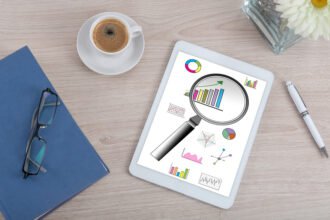In which Jill puts data in the center of the flywheel. And she’s in good company.
In which Jill puts data in the center of the flywheel. And she’s in good company.
A 1982 photo of Microsoft founders Bill Gates and Paul Allen shows the young entrepreneurs pausing from a heavy-duty design session to smile for a reporter’s camera. Back then Microsoft was on the cusp of becoming a household name – the company announced a fresh logo design and hired a new president – but yachts had not yet been purchased, nor had foundations been launched. Call it the DOS Age of Microsoft, to be followed much later by the Bing Dynasty.
Self-assured, though just shy of media-polished, Allen and Gates were already comfortable donning the technology innovator mantle, and they would spend their careers wearing it proudly. But an even better glimpse into the future is the set of scribbles on the white board behind them. In the middle of a flywheel partially-obscured by Gates’ head is the word “Data.” The drawing suggests a core principle: that even as Microsoft continued to innovate, data would be the common denominator in its evolving product portfolio.
Whether Microsoft has stayed true to the vision of data-as-central-to-software-functionality is up for debate. The point here is that all these years later the vision holds up.
IT departments furtively investing in successive integration efforts, hoping for the latest and greatest “single version of the truth” watch their budgets erode and their stakeholders flee. CIOs praying that their latest packaged application gets traction realize that they’ve just installed yet another legacy system. Executives wake up and admit that the idea of a huge, centralized, behemoth database accessible by all and serving a range of business needs was simply a dream. Rubbing their eyes they gradually see that data is decoupled from the systems that generate and use it, and past infrastructure plays have merely sedated them.
Our corporate leaders are awakening to the understanding that data is an asset in its own right. They need to begin investing in data (and the processes, skills, and enabling technologies to cleanse, integrate, annotate, and deploy it) not in the context of systems, but as a business enabler. It means investing in human and process capital. It means divorcing data governance from IT governance. In the era of big data, leaders need to – co-opting the tag line of another renowned software innovator – “think different.”
Simply put, we need to design our data strategies just as we design our organizations, our business processes, and our systems. If we’d done that at the very beginning, when we were younger and had a vision for how far we could go, just imagine where we’d be now.






